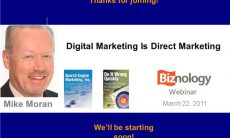‘Customer experience’ refers to putting the customer and their needs at the center of everything a company does. It means identifying all the touchpoints – individual interactions – throughout each customer journey and designing each of those touchpoints to deliver what the customer needs flawlessly.
As the customer moves through the journey, from touchpoint to touchpoint, they also move through the buying cycle, from Awareness to Consideration, to Preference, to Purchase and hopefully to repeat purchases and Advocacy. And they require different levels of attention and detail at different points depending on where they are in the cycle.
If your company is losing customers between the Awareness and Consideration phases or between Consideration and Preference, it indicates a shortcoming in differentiated communication for customers at different points in the cycle. This could be a content problem or a reach problem. But digital insights from search and social listening can help with understanding what the problem is and digital channels can be used to test and optimize messaging.
Arguably, the most important element of the customer experience and therefore, of marketing, is the content that a company offers to its customers. As I’ve mentioned, content must deliver on customer needs to be effective. In fact, Content, along with Search and Social are the three legs that support customer experience. Here’s how that works: Use social and search listening to gain insights into customer needs. Build content from the ground up based on the insight. Then use search to pull customers into that content that they’re looking for and social to syndicate the content to the various conversations customers are taking part in.
A word here on content development
Whether it’s for product pages, collateral, PR, blogs, social, or anything else, content is expensive. But it becomes dramatically more so when it’s created in company silos that are producing the same content at the same time. Or when it’s used once and forgotten.
Events, for instance, tend to be huge forcing functions for the creation of high-volume content. But once an event is over, that content is often abandoned and never used or seen again. It’s much better to work from a common editorial calendar, tag by audience and customer journey point, and store all content in a common repository. Then, when content is needed on any topic, it can be easily found in the repository and reused if it already exists.
For the most part, customers have relatively simple and straightforward needs. They need information. They need attention. They need value. And they need it to be easy for them to get these things. When companies are small, it’s easy to respond to these customer needs. But over time, they add scale, regulation, record keeping, data gathering, as well as increasingly complex approvals and workflows. These continually and unwittingly add friction to the fulfillment of customers’ needs.
So at some point, the enterprise needs to evaluate this natural progression. Redesign and automate processes and add tooling to reduce the friction. This improves the interactions that define the company in the customers’ minds.
A digital transformation provides an excellent opportunity to streamline interactions at critical touchpoints and add employee focus and tooling where it’s needed most. The key is to make the customer journey a delight rather than a chore. This should be the ultimate goal because satisfied and even delighted customers drive the most revenue over the longest period of time.





